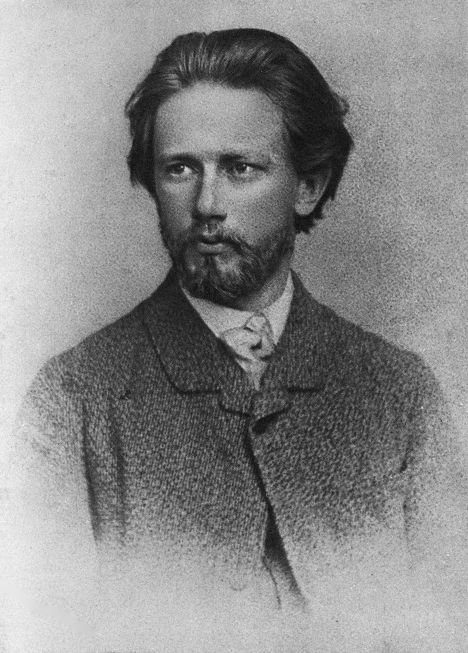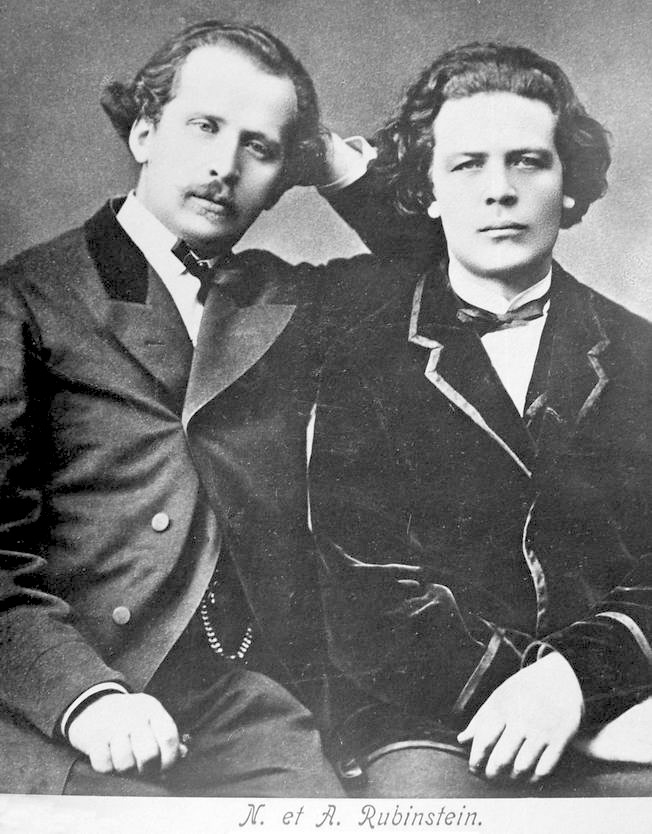The Man Behind the Music: Pyotr Ilyich Tchaikovsky
Ballet fans and music enthusiasts alike enjoy Pyotr Ilyich Tchaikovsky’s ballet scores, from The Nutcracker to Swan Lake. However, Tchaikovsky is somewhat of a controversial figure. His life was full of emotional turmoil, and his music was called melodramatic and even vulgar by critics. Nevertheless, his mastery and impact on ballet scores are undeniable. According to the iconic choreographer George Balanchine, “They say that Tchaikovsky is great at nothing but wonderful melodies. That’s not true! He intertwines his melodies in complex ways, he practically builds Gothic cathedrals out of them, harmonizing inventively, bringing them through different tonalities in a masterful way.” Read on to learn about Pyotr Ilyich Tchaikovsky’s turbulent life and his iconic ballets!
Early Life
Tchaikovsky was born on April 25th, 1840 in a small Russian industrial town called Kamsko-Votkinsk. Enchanted by music, it was not long until Tchaikovsky began writing his own compositions; he composed his first piece at the age of four with the help of his younger sister Alexandra. At the age of five, he began formal piano lessons. Despite his obvious interest in music, his parents hoped he would pursue a more stable career and sent him to the Imperial School of Jurisprudence, a boy’s boarding school in St. Petersburg, at the age of ten.

Tchaikovsky in 1870
Education and Early Career
Desiring to honor his parents’ wishes, Tchaikovsky resigned himself to an administrative job. He worked diligently as a clerk at the Ministry of Justice for several years. Still, he couldn’t keep himself away from music and took classes at the Russian Musical Society in his free time. Eventually, Tchaikovsky decided to follow his passion, and in 1862, he left his job and enrolled as a full-time student at the St. Petersburg Conservatory. He attended the school for three years, studying harmony and counterpoint with Nikolay Zarmeba and composition and instrumentation with Anton Rubinstein (a famous pianist). While at the Conservatory, he taught music lessons to other students to make ends meet.
After graduating from the Conservatory in 1866, Tchaikovsky’s close friend and Anton Rubinstein’s brother, Nikolay Rubinstein, invited Tchaikovsky to teach music theory at the Russian Musical Society (later renamed the Moscow Conservatory). Tchaikovsky agreed and moved to Moscow, but he struggled with the position. He found teaching at the Musical Society difficult and put additional pressure on himself by composing profusely. He wrote his first symphony (Symphony No. 1 in G minor), first opera (The Voyevoda), and a remarkable overture (Romeo and Juliet) while teaching. Unhappy and overworked, he suffered from a mental crisis during this time.

The Rubinstein Brothers in 1910
Swan Lake
Despite the strain, Tchaikovsky continued to write. In 1875, the director of the Moscow Imperial Theater commissioned Tchaikovsky to compose the score for Swan Lake. Tchaikovsky finished the score in just under a year, but he ran into conflict with choreographer Julius Reisinger repeatedly during the process. Swan Lake premiered in 1876 to middling success. The choreographer Julius Reisinger, a German, was relatively unknown, and anti-German sentiment was high at the time. In addition, Tchaikovsky’s score, which was the first of its kind, was considered unsuitable for dance. Still, Swan Lake was performed repeatedly and Tchaikovsky’s score would eventually become iconic.

Page of the ballet Swan Lake, annotated by Tchaikovsky, 1876.

An illustration of Nadezhda von Meck
The Sleeping Beauty and Nadezhda von Meck
The same year Swan Lake premiered, Tchaikovsky began communicating with his future patroness Nadezhda von Meck. Von Meck was the widow of a railroad tycoon, and thanks to her financial support, Tchaikovsky was able to retire from teaching and spend his time composing. He moved to a home outside of Moscow and established a new daily routine, which included reading, walking in the woods, composing, and playing piano with friends. He was doing much better mentally during this period and even overcame his fear of conducting, allowing him to tour around Europe twice as a conductor. In August of 1889, Tchaikovsky composed his second ballet, The Sleeping Beauty. Tchaikovsky later said that this was his favorite ballet that he composed, perhaps because it was created during a pleasant period in his life.
Shortly after The Sleeping Beauty was composed, Tchaikovsky’s patroness Nadezhda von Meck informed him that her finances were in shambles. Von Meck had requested that she and Tchaikovsky never meet, but they wrote many, many letters back and forth. In 1890, she completely cut off correspondence from Tchaikovsky and withdrew her patronage. This deeply disturbed Tchaikovsky, and during his final illness, he would repeat von Meck’s name over and over again.
The Nutcracker
Sadly, Tchaikovsky did not have long to live after this disruption. In 1891, Tchaikovsky composed his final ballet, The Nutcracker. He composed the ballet while traveling, including a trip to New York for the inauguration of Carnegie Hall. Composing The Nutcracker was an artistic challenge for Tchaikovsky; he found the setting of the Land of the Sweets difficult to express musically. Nevertheless, he overcame the challenge, and he proceeded to orchestrate the ballet from January through March of 1892. Just a year after Nutcracker’s completion, Tchaikovsky died at the age of 53.

A portrait of Tchaikovsky painted after his death
Although he died at a young age, Tchaikovsky left a legacy that has lasted many lifetimes. His oeuvre is uniquely emotive through his masterful use of melody, orchestration, and harmony. Critically, Tchaikovsky transformed the standards of ballet scores. His melodies were emotionally moving while also danceable. Additionally, by using key changes, his music gave ballets a structure and complemented their storylines, which had not been done before. The influential choreographer George Balanchine was influenced by Tchaikovsky, saying that his music made him fall in love with ballet, and many ballet lovers echo Balanchine’s sentiment. To this day, some of PNB’s most popular ballets (Swan Lake and The Nutcracker) are set to Tchaikovsky’s music.
PNB is performing both The Nutcracker and Swan Lake this season! Enjoy Tchaikovsky’s scores played by the PNB Orchestra, the “best ballet band in America” according to the New York Times, accompanied by PNB’s world-class dancers in these two breathtaking productions.
Sources: Delacoma, W. (2021, December 14). How Tchaikovsky Raised the Bar for Ballet Music. Experience CSO. Retrieved December 11, 2023, from https://cso.org/experience/article/7988/how-tchaikovsky-raised-the-bar-for-ballet-mus. Gazdarica, M. (n.d.). Pyotr Ilyich Tchaikovsky. The Kennedy Center. Retrieved December 11, 2023, from https://www.kennedy-center.org/artists/t/ta-tn/pyotr-tchaikovsky2/. (2023, November 2). Pyotr Ilyich Tchaikovsky – Russian Composer. Encyclopedia Britannica. Retrieved December 11, 2023, from https://www.britannica.com/biography/Pyotr-Ilyich-Tchaikovskys. (n.d.). Who is Tchaikovsky? San Francisco Ballet. Retrieved December 11, 2023, from https://www.sfballet.org/discover/backstage/who-is-tchaikovsky/.





